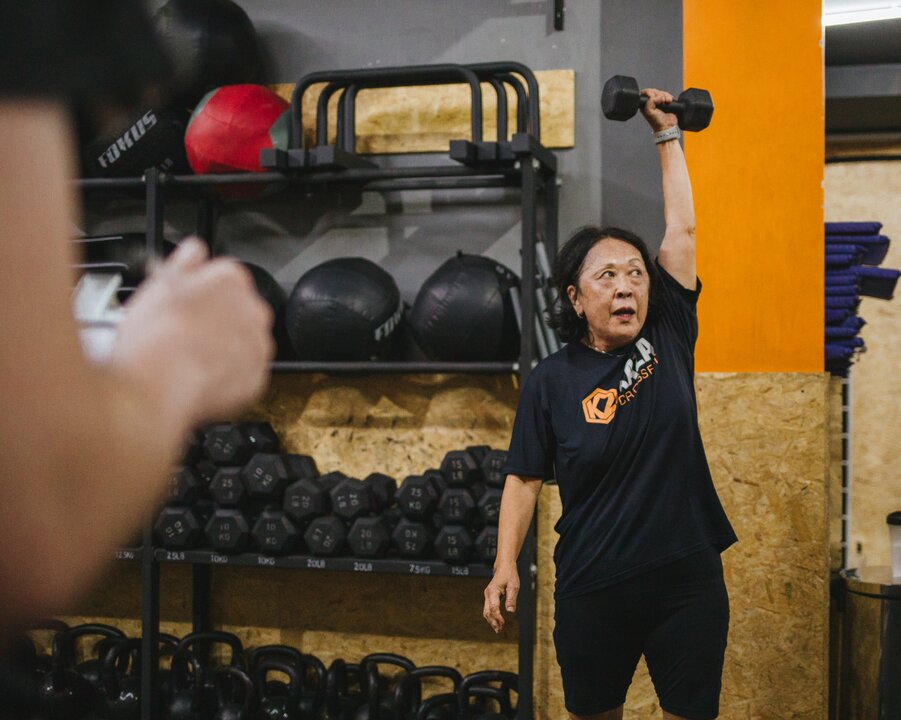Seniors
 When CrossFit hit the fitness scene, it seemed poised for roughly 15 minutes of fame. That was nearly two decades ago.
When CrossFit hit the fitness scene, it seemed poised for roughly 15 minutes of fame. That was nearly two decades ago.
Known for its camaraderie, competitive atmosphere, and challenging classes, CrossFit is clearly here to stay—despite confusion about what it is, and controversy over what it does to your body.
And though it’s not as trendy as it once was, it’s gaining in popularity among older adults, partly because it targets the functional fitness areas that seniors care about most: strength, endurance, balance, flexibility, and coordination.
So let’s set the record straight. Here’s what every older adult needs to know about CrossFit.
Crossfit is a high-intensity training program designed to help you build a functional strength and cardiovascular endurance through extremely varied workouts
Each session, or class, includes a workout of the day (WOD) that uses the most effective, efficient movements from weightlifting, gymnastics, rowing, and more.
All WODs can be adapted for people of any age or fitness level,according to the crossfit website. But one thing is for sure: They’ll always be challenging.
“There are certain things we want to pursue from an athletic standpoint [in CrossFit] because they have some reward to them: It improves fitness, maintains health, or pushes us further than we’ve been pushed before,” says Nate Helming, co-founder of The Run Experience and a senior coach at San Francisco CrossFit. “However, the things that have a higher work level also have a higher risk level.”
Does that mean you should completely avoid it? Not necessarily.
“What I have seen is that CrossFit is one of the best systematic approaches to giving participants an opportunity to learn and practice technical movements as safely as possible,” Helming explains.
As part of that systematic approach, most gyms require new members to take anFoundations course that teaches proper form for the nine foundational movements of crossfit. After you complete that course, you can sign up for regular classes.
